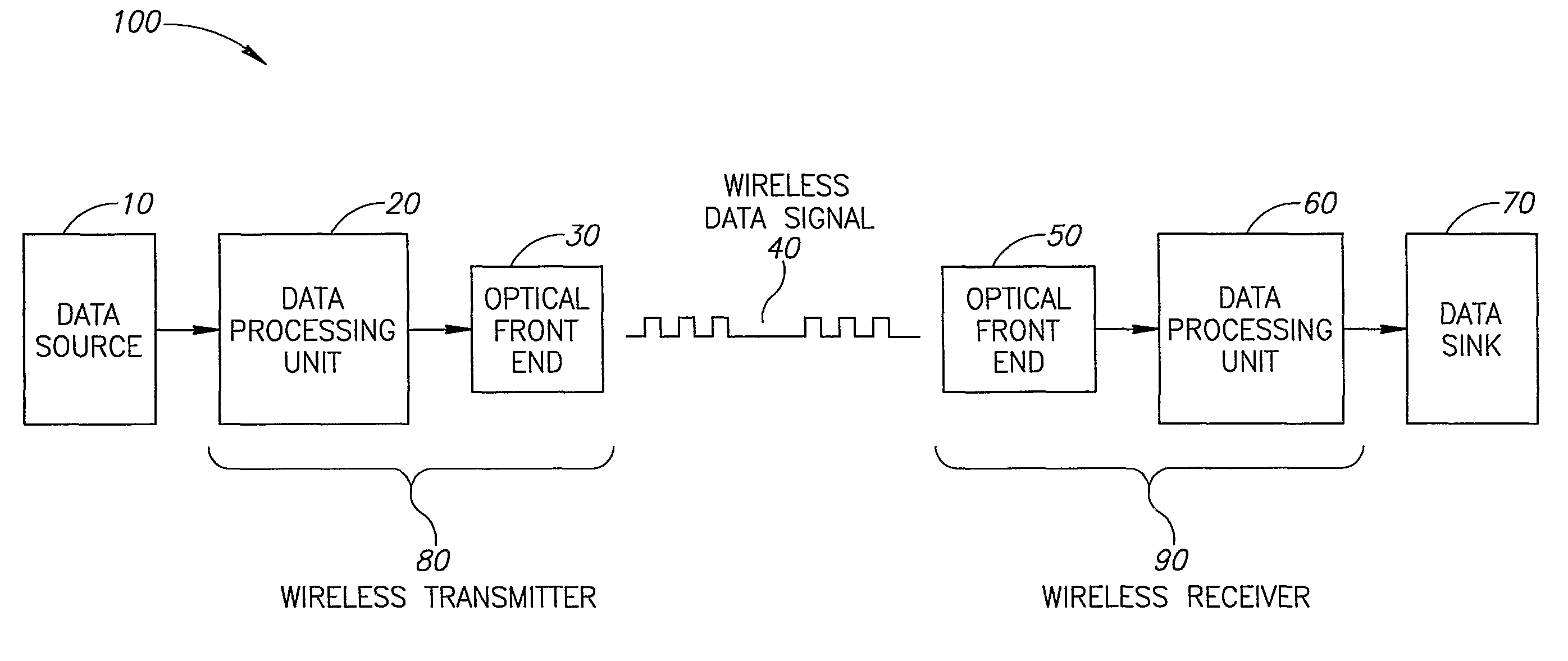Error detection and correction for base-band wireless systems
a wireless system and error detection technology, applied in the direction of digital transmission, satellite communication transmission, electromagnetic transmission, etc., can solve the problems of large power emission of the transmitter, increased risk of errors, and reduced signal strength, so as to achieve a more robust wireless optical communication system and extend the operational range.
- Summary
- Abstract
- Description
- Claims
- Application Information
AI Technical Summary
Benefits of technology
Problems solved by technology
Method used
Image
Examples
Embodiment Construction
[0065]FIG. 1 is a schematic illustration of a wireless optical communication system 100, according to an exemplary embodiment of the invention. In an exemplary embodiment of the invention, system 100 comprises an IR wireless transmitter 80 and an IR wireless receiver 90. Optionally, IR wireless transmitter 80 receives data from a data source 10 and transmits a wireless data signal 40 to IR wireless receiver 90. In an exemplary embodiment of the invention, wireless data signal 40 may be affected by physical phenomenon, for example ambient natural or artificial light in the room or enclosure, or the distance between the transmitter and receiver, causing attenuation to wireless data signal 40 and thus errors in the signal received by IR wireless receiver 90. In an exemplary embodiment of the invention, wireless data signal 40 is encoded using a robust modulation and encoding method, comprising codewords, which replace a specific number of bits (e.g. symbols) of the original data. The r...
PUM
 Login to View More
Login to View More Abstract
Description
Claims
Application Information
 Login to View More
Login to View More - R&D
- Intellectual Property
- Life Sciences
- Materials
- Tech Scout
- Unparalleled Data Quality
- Higher Quality Content
- 60% Fewer Hallucinations
Browse by: Latest US Patents, China's latest patents, Technical Efficacy Thesaurus, Application Domain, Technology Topic, Popular Technical Reports.
© 2025 PatSnap. All rights reserved.Legal|Privacy policy|Modern Slavery Act Transparency Statement|Sitemap|About US| Contact US: help@patsnap.com



